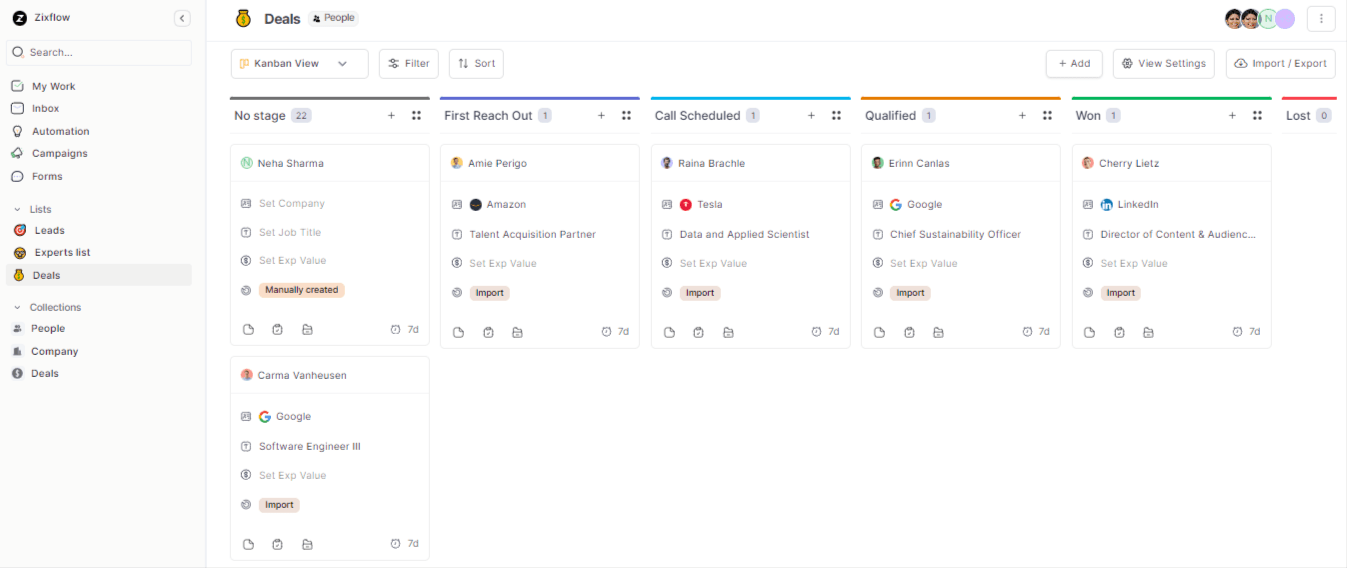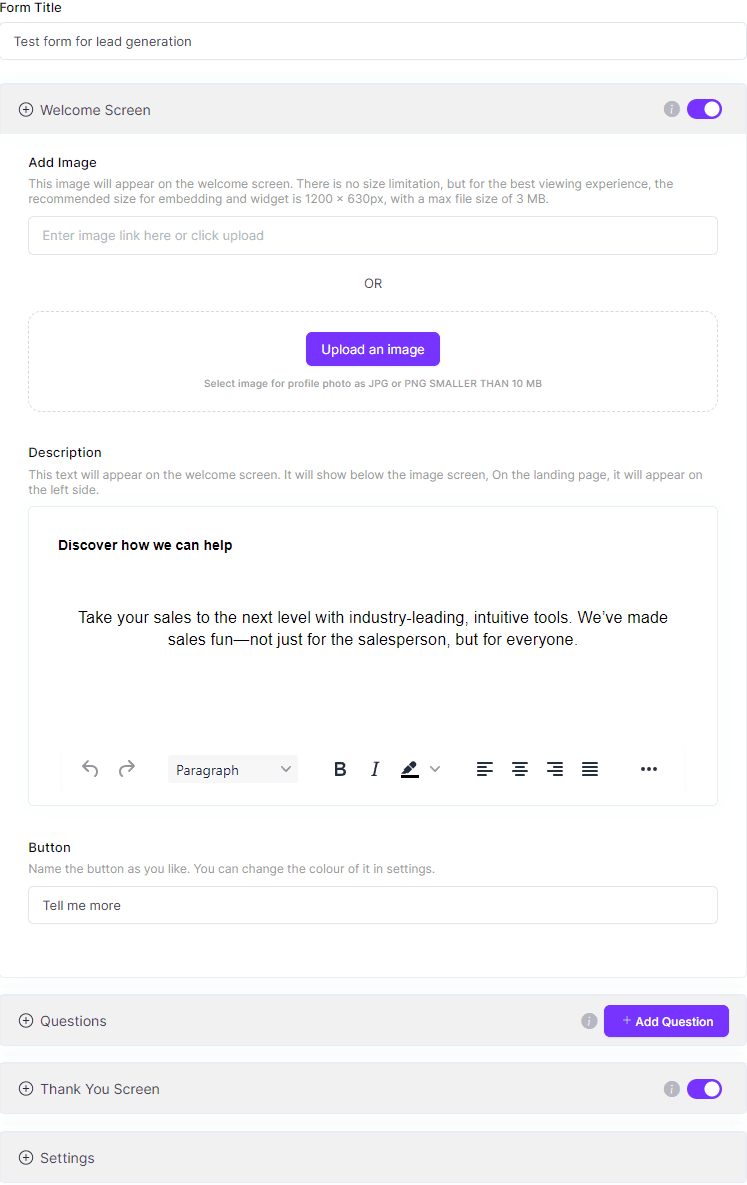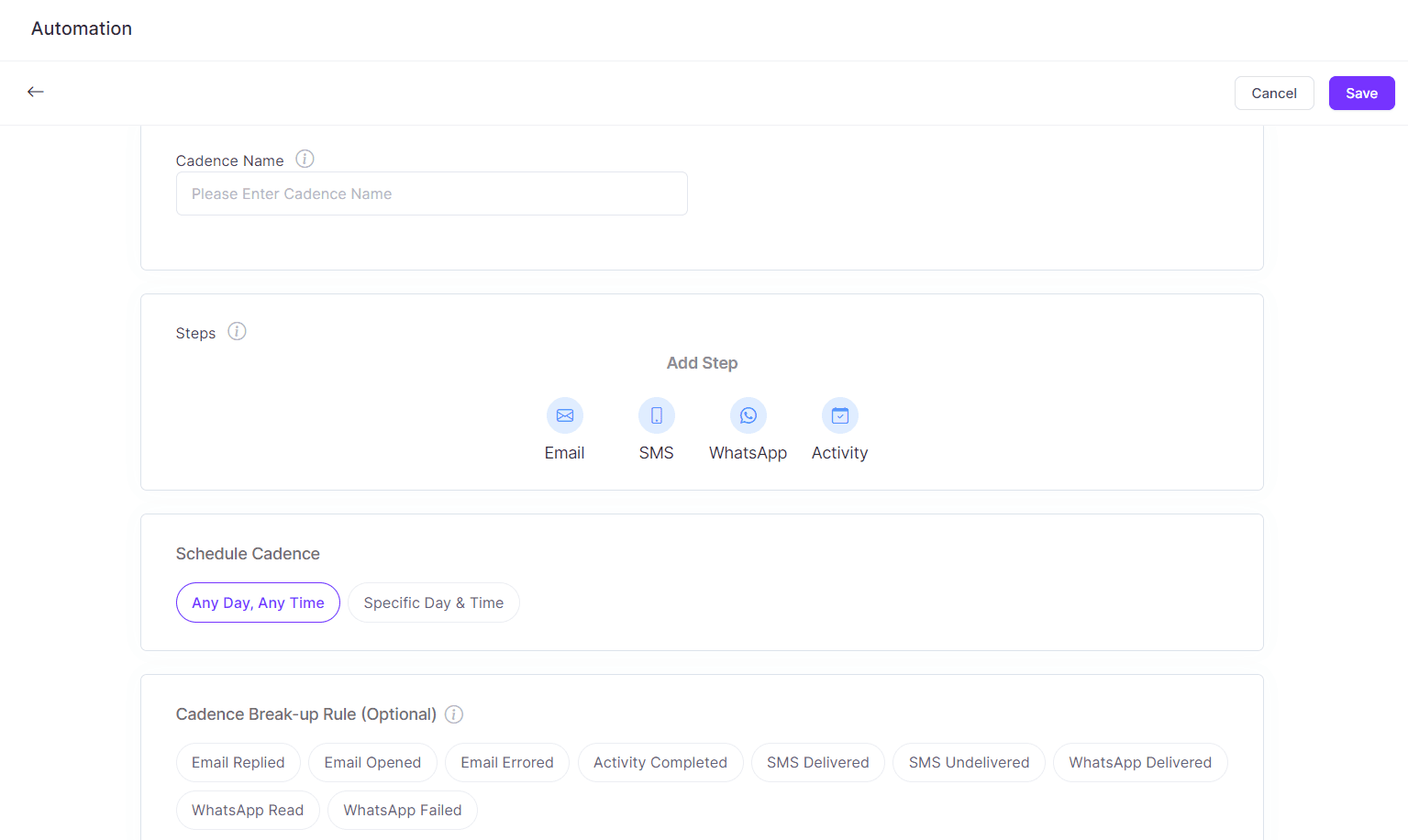What is Sales Efficiency and Everything You Need to Know

You're a sales superhero, closing deals left and right and making your company proud. But here come the dreaded questions!
Are you truly working at your peak performance?
Are you maximizing your results while minimizing the resources you use?
Welcome to the world of sales efficiency. Where you have to get out there and stay on your toes to drive results. No matter the amount of effort you are putting in, no matter the types of sales you are doing, in the end it all comes down to how much revenue you generate.
Are you being productive enough?
Are you able to tap into your potential?
Find answers to all your questions with sales efficiency metrics.
What is sales efficiency, anyway?
Sales efficiency measures how much revenue your sales team generates compared to the resources they use, including time, cost, and effort. In other words, it's like a tightrope walker trying to balance the highest possible revenue on one side and the lowest possible expenses on the other. The better the balance, the more efficient the sales team.
Here's a simple formula to calculate sales efficiency:
Sales Efficiency = Sales Revenue / Sales Expenses
Just divide your sales revenue by your total sales expenses, and voilà! You've got your sales efficiency. For example, imagine your sales turnover is $500,000, and the expenditures linked to these sales amount to $100,000. In this scenario, you'd have a sales efficiency factor of 5, indicating that every dollar invested in sales yields $5 in return as revenue. Not too shabby, right?
What does a good sales efficiency ratio look like?
Maybe you're curious- 'What's a top-notch sales efficiency ratio, and how will it affect my venture?'
Yet, like a ton of other topics, the reply isn't quite cut and dried. It can depend on factors like industry standards, the scale of your business, and its stage of growth. However, a widely accepted benchmark is that a sales efficiency ratio of 1 or above is considered good. So, let's break down what that magical number means.
In practical terms, a sales efficiency ratio of 1 is like finding the perfect equilibrium. It means you're making a dollar in return for every dollar spent on sales. But, on the other hand, if your sales efficiency ratio is above 1, you're generating more than a dollar in revenue for each dollar spent; it's like hitting a home run in the sales world.
But, like any old hand at sales will tell you, the game doesn't end there. Sales efficiency ratios can fluctuate based on factors like the sales pipeline stages, product price point, and market conditions.
So, what's the next move for a sharp biz boss?
Stay alert to changes in this measure and adjust your sales strategy as needed to maintain or improve your sales efficiency.
How measuring sales efficiency can be a game-changer
Keeping tabs on your sales efficiency helps you peer into the future, showing you how effectively your sales team is using its resources. It can spotlight areas where you may be throwing money down the drain or where you could invest more to rake in even more dough. Understanding your sales efficiency can lead to smarter decision-making, improved profitability, enhanced sales engagement, and increased sales . It's like holding a glimpse into the future of your sales operations!
Why efficiency and effectiveness are like two sides of the same (sales) coin
Imagine you're a chef in a busy restaurant kitchen, whipping up delicious meals for hungry customers. You're working fast and efficiently, making the most out of every ingredient and minimizing waste. But what if you're using the wrong recipe or cooking the wrong dish? All that efficiency will only help if the end result is what the customer ordered.
Sales efficiency and sales effectiveness are similar to that chef's dilemma. You could be doing everything right, moving at lightning speed, but still miss the mark if you're not working on the right targets.
Sales efficiency: The art of doing things right
Like a skilled chef, a sales professional needs to maximize their output with the least input. Efficiency in sales boils down to the principle of productivity: maximizing revenue while minimizing time, effort, and financial investment. High sales efficiency means using your resources wisely and economically to generate sales.
You're the Gordon Ramsay of the sales world, chopping through deals and leads with precision and speed, asking the right sales qualifying questions and spending time on the prospects with potential.
Sales effectiveness: The science of doing the right things
Even the most efficient sales machine can fall short if not focused on the right objectives. Sales effectiveness is all about doing the right things to achieve your goals. It's measured in terms of quality customer interactions, the ability to close deals, or even your capacity to upsell or cross-sell. A highly effective sales team is like a Michelin-star restaurant: they know how to make customers happy, keep them coming back, and grow their accounts.
So, while sales efficiency is about ‘doing things right,’ sales effectiveness is about ‘doing the right things.’ It's like having the perfect blend of culinary skills and knowing which dish to serve to delight your customers.
Finding the perfect balance between sales efficiency and effectiveness
A high-performing sales organization needs both efficiency and effectiveness. A highly efficient but ineffective sales team is like a chef who can chop onions in record time but keeps making onion soup when the customer orders a salad. Conversely, a highly effective but inefficient sales team might be serving the right dishes, but the kitchen is a mess, and they're spending way too much on ingredients.
The key is to balance and optimize both aspects, just like a master chef who can use their skills and resources to create the perfect meal. So, next time you evaluate your sales performance, remember to strike that ideal balance between efficiency and effectiveness.
Bon appétit!
Metrics and benchmarks for sales efficiency
There are several ways of increasing your sales efficiency. For instance employing a sales automation tool that makes your team more efficient. Or building a new strategy that not only helps you save resources but also helps you utilize them to maximum potential.
But to make the sales team more efficient, understanding sales efficiency and its measurement is crucial. So, let's delve into some vital metrics and benchmarks that can elevate your prowess in achieving sales efficiency:
Sales cycle length: Time is money
A shorter sales cycle means you close deals faster, leaving more time to find new prospects. Monitor your average sales cycle length to ensure your team works swiftly and efficiently. You can shorten the sales cycle by creating ideal customer profiles, getting qualified leads, reaching out to the right decision maker, and most importantly keeping your value proposition crisp.
The shorter your sales cycle, the faster will be your conversions, and faster the conversion the better will be your sales efficiency. You can further speed up your sales cycle by keeping track of all the existing cycles in a visual format. Zixflow helps you do that by providing you with an easy to use, drag and drop sales pipeline. It helps you make your sales pipeline management easier by helping you keep a track of sales cycles for every individual customer through filters.

Cost Per Lead: Make every dollar count
High costs per lead can eat into your profits. By keeping track of the total sales cost divided by the number of leads, you can see how efficiently you're spending your resources to generate leads. Remember, lower is better!
Cost Per Lead= Sales Cost / Total number of leads
Adding automation to lead generation and qualifying leads can help you make the cost lower. For instance, a Leadbot can help you tackle the visitors on your website by answering their queries, collecting information, and also qualify them before adding them to your sales pipeline. This way you can automate lead generation and qualification while also saving capital.

Revenue Per Sales Rep: Are you getting the bang for your buck?
Estimate it by dividing your total revenue by the number of sales reps to find the magic number that shows your team's productivity. Of course, a higher figure means that your sales team is working really hard and who doesn’t love that?
Revenue Per Sales Rep= Total Revenue / Number of Sales Reps
Conversion Rate: Turning prospects into gold
Imagine your leads are like raw ore, and your sales reps are alchemists turning them into gold. A higher conversion rate means your alchemists are working their magic more efficiently, transforming more leads into customers.
Conversion Rate= Number of Conversions / Total Number of Leads x 100
The more the conversion rate the better! But to get a higher conversion rate you also need to make sure that your sales team’s motivation is intact that is taking them in the right direction. So, an increased conversion rate is a two-way street.
Customer Acquisition Cost (CAC): Keeping expenses in check
Acquiring new customers can be pricey, but the lower your CAC, the more efficiently you spend your marketing and sales resources. Watch this number so you can save money.
CAC= Cost of Sales + Marketing / Number of customer acquired
Customer Lifetime Value (CLTV) to Customer Acquisition Cost (CAC) Ratio: The ultimate efficiency indicator
Comparing your Customer Lifetime Value (CLTV) to your Customer Acquisition Cost (CAC) is like weighing the treasure you've collected against the cost of the treasure hunt. A higher CLTV:CAC ratio means you're spending less to acquire customers who generate more revenue, which is the holy grail of sales efficiency!
Sales Funnel Leakage: Plugging the holes
Picture your sales funnel as a bucket; the water inside represents your potential customers. The more holes in your bucket, the more water you'll lose! A lower leakage rate means you're keeping more potential customers in your sales process.
You can reduce sales funnel leakage with the help of sales automation, for instance, with Zixflow instead of adding the leads one by one manually to your pipeline, you can export the entire data in one go through one sheet. Similarly, you can also export the data in one go making sure that your sales funnel is leak proof.
Average Deal Size: Bigger is better
If your team is closing more significant deals with the same resources, it's like hitting the jackpot! First, monitor the average revenue generated from each closed deal to see if you're improving your sales efficiency.
Lead Response Time: Strike while the iron is hot
The early bird gets the worm, and the same goes for sales. A shorter response time can significantly increase your chances of engaging a lead while your product or service is still fresh in their mind, boosting your sales efficiency.
Reach out to your lead before they reach out to you. Make an impact on them by nurturing them with the help of a carefully curated sales cadence. Hot iron is more malleable and so is a hot lead. So make sure that you do not miss the opportunity to strike on either.

Sales Velocity: The need for speed
How quickly are leads zooming through your sales funnel? The faster you close deals, the higher your sales velocity and the more efficient your sales process is. It's like upgrading your sales engine for maximum performance!
Strategies to supercharge your sales efficiency
Your sales team is undoubtedly working very hard! But if that work is not getting the desired output then you need to see where you are lacking and focus on improving them. Here are a few strategies that could provide insight into how to turbocharge your sales team's efficiency, pushing your business success to soar to new heights.
Regular training for the win
Imagine a world-class athlete without proper training. It doesn't make sense. The same goes for your sales team. Regular training sessions boost their skills and knowledge and equip them with the confidence and expertise needed to bring home the bacon.
However, regular training does not mean that you will have to organize sales meetings and classes for your sales team. You can automate the entire training process by pre-recording the videos and adding them to the Zixflow Learn section. So put your sales training in async mode.
Automate to generate results
Gone are the days when only hard work was needed to succeed. Today you need to do smartwork- like automating mundane sales tasks and making scheduling meetings easier.
An individual CRM or pipeline management tool for sales is not enough today. You need a sales operating system that helps you automate your sales from beginning to end and allows your sales team the space to do what they do best- Selling!
Unleash the power of data analytics for the modern sales team
Data is the new oil, and your sales team needs to tap into this valuable resource. Data-driven insights can reveal trends, customer behavior, and hidden opportunities—turning your sales team into a group of (friendly) fortune-tellers.
So keep a track of your customer behavior, see how your sales activity efforts are performing, through which sales activity are you able to garner most conversions, what are the reasons you are losing a deal, and then utilize this data to make efficient business decisions.
Choose quality over quantity in leads
Ever heard of the ‘Pareto Principle?’
It states that 80% of your results come from 20% of your efforts. So, instead of chasing every lead, focus on the ones most likely to convert. As a result, you'll save time and resources, by simplifying your sales process and making lean, mean, and efficient.
Feedback is the breakfast of champions so take regular reviews from your sales team
Remember the story of the slow turtle and quick rabbit? The rabbit might have been faster, but the tortoise won the race because it was consistent. The same principle also applies to your sales team. Regular feedback and performance reviews ensure they stay on the right path, leading to continuous improvement and enhanced efficiency.
Teamwork makes the dream work so foster collaboration
Sales and marketing are like Batman and Robin—they're more powerful when they work together. So, promote collaboration between these departments, and watch as they steamroll through shared goals and strategies, resulting in a force to be reckoned with.
Optimize your sales process
Efficiency means cutting out the dead weight. Reassess your sales process regularly to remove unnecessary steps. For instance, you can automate your lead generation process similarly you can also automate your sales cadence up to 100% with an efficient sales cadence software. So, look out for ways that help you streamline your sales process and also take tedious work off your plate.
Clear expectations lead to clear results
Ever tried assembling IKEA furniture without the instructions?
It's not pretty.
The same applies to your sales team. Clearly define goals and targets, and watch as they work together like a well-orchestrated symphony, hitting all the right notes.
Customer retention is the key
As the wise saying goes, ‘a bird in the hand is worth two in the bush.’
It's often more cost-effective to retain an existing customer than to acquire a new one. Focus on customer satisfaction and building long-term relationships like leveraging a SaaS referral program for customer retention and growth.
With such attempts and exemplary customer service you'll create a loyal customer base that fuels your sales efficiency.
Stay ahead in the sales efficiency game
Measuring and understanding sales efficiency is crucial for any business aiming to thrive in the current cut-throat commercial landscape. By continuously monitoring your metrics, refining your strategies, and investing in SalesOS like Zixflow, you can maintain a lead in the competition and take control of higher profits.
Remember, improving sales efficiency is a journey, not a destination, so keep striving for excellence, and success will follow.
